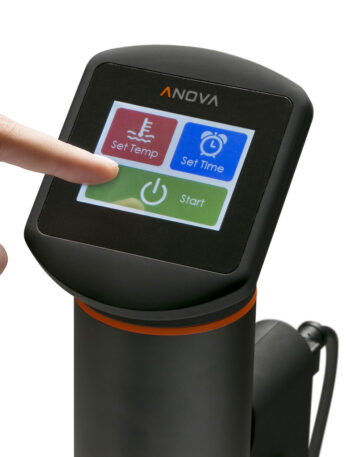Safe Food Handling with Antiseptic Hand Lotion
Safe food handling is paramount in every kitchen. Ensuring that the meals we prepare are safe and free from harmful bacteria is essential for the well-being of ourselves and our loved ones. One effective tool in maintaining proper hygiene during food preparation is the use of antiseptic hand lotion.
Clean Hands, Safe Meals
Proper hand hygiene is the foundation of safe food handling. Hands can harbor harmful bacteria that can contaminate food, leading to foodborne illnesses. Thoroughly washing hands with soap and warm water for at least 20 seconds before and after handling food is crucial. However, in situations where soap and water are not readily available, antiseptic hand lotion can be an effective alternative to maintain cleanliness.
The Power of Antiseptic Hand Lotion
Antiseptic hand lotions, also known as hand sanitizers, contain alcohol or other antimicrobial agents that kill a broad spectrum of bacteria and viruses. When used correctly, they can significantly reduce the risk of cross-contamination during food preparation. Look for lotions with at least 60% alcohol content for optimal effectiveness.
Proper Usage of Antiseptic Hand Lotion
It’s important to note that hand lotions should never replace regular handwashing but should be used as a supplement when necessary. Here are a few key points to consider when using antiseptic hand lotion in a food handling setting:
a. Apply an appropriate amount: Dispense a coin-sized amount of hand lotion onto your palm. Avoid using excessive amounts that leave hands overly wet.
b. Thoroughly rub hands: Rub the lotion over all surfaces of your hands, including between fingers and around nails, until it evaporates. This process should take about 20 seconds.
c. Follow manufacturer’s instructions: Different hand lotions may have specific instructions for optimal usage. Read and adhere to the guidelines provided by the manufacturer.
Additional Food Safety Measures
While antiseptic hand lotion can be a valuable tool, it is essential to remember that it is only one aspect of safe food handling. Here are a few additional measures to ensure food safety:
a. Clean and sanitize surfaces: Regularly clean and sanitize countertops, cutting boards, utensils, and other food contact surfaces to prevent cross-contamination.
b. Separate raw and cooked foods: Keep raw and cooked foods separate to avoid cross-contamination. Use different cutting boards and utensils for each.
c. Cook food thoroughly: Ensure that food reaches proper internal temperatures to kill any potential pathogens. Use a food thermometer to verify doneness.
d. Store food properly: Refrigerate perishable foods promptly and at the correct temperatures to prevent bacterial growth.
Safe food handling is crucial for protecting ourselves and loved ones
Maintaining safe food handling practices is crucial for protecting ourselves and our loved ones from foodborne illnesses. While proper handwashing is the gold standard, antiseptic hand lotion can serve as a convenient and effective supplement when handwashing is not readily available. By incorporating antiseptic hand lotion into our routine, along with other essential food safety measures, we can create a clean and healthy environment in our kitchens, ensuring the meals we prepare are safe, delicious, and worry-free.
HISTORY
History of unsafe food handling
The history of unsafe food handling is unfortunately intertwined with the development of human civilization. Throughout the ages, there have been numerous instances where improper handling, preparation, and storage of food have resulted in outbreaks of foodborne illnesses and even major public health crises. Here, we will explore some notable periods and incidents that highlight the history of unsafe food handling:
-
Ancient Times: In ancient civilizations, limited knowledge of food safety and hygiene practices led to frequent instances of foodborne illnesses. Lack of proper sanitation, inadequate cooking techniques, and the absence of food preservation methods contributed to the spread of diseases. For example, in ancient Rome, contaminated water and food, including seafood, led to widespread outbreaks of illnesses such as diarrhea and food poisoning.
-
Middle Ages: During the Middle Ages, food safety was often compromised due to factors such as poor sanitation, limited refrigeration, and lack of understanding about the sources of contamination. The crowded and unsanitary conditions in towns and cities, coupled with limited knowledge of hygiene, led to the spread of diseases like cholera and typhoid fever. Improper handling and preservation of food, including meat, dairy, and grains, were common contributors to foodborne illnesses.
-
Industrial Revolution: The rise of industrialization in the 18th and 19th centuries brought about significant changes in food production, processing, and distribution. While advancements in technology improved the availability and convenience of food, they also introduced new risks. Mass production and the need to meet growing demand sometimes compromised food safety standards. Contaminated products, such as canned goods, meats, and dairy, caused outbreaks of botulism, salmonella, and other illnesses.
-
Modern Times: In more recent history, there have been several notable incidents that shed light on the consequences of unsafe food handling practices. For instance, the outbreak of Escherichia coli (E. coli) in 1993 linked to undercooked ground beef served at a fast-food chain affected hundreds of people and resulted in several deaths. This incident highlighted the importance of proper cooking temperatures and meat handling procedures.
Additionally, contaminated produce, such as lettuce and sprouts, has been associated with outbreaks of illnesses like Salmonella and E. coli in various countries. These incidents underscore the need for strict adherence to food safety protocols throughout the entire food supply chain, from farming and processing to distribution and preparation.
- Globalization and Food Safety: With the increased globalization of the food industry, ensuring food safety has become a global concern. The movement of food across borders, complex supply chains, and the introduction of new ingredients and processing methods pose challenges in maintaining food safety standards. Outbreaks of foodborne illnesses have occurred due to contaminated imported products, leading to increased awareness and stricter regulations to prevent such incidents.
In response to these historical incidents and ongoing challenges, food safety regulations and standards have been developed and improved over time. Government agencies, such as the Food and Drug Administration (FDA) in the United States and the European Food Safety Authority (EFSA) in Europe, enforce guidelines and conduct inspections to ensure safe food handling practices at all stages of the food production and distribution process.
Furthermore, increased consumer awareness and education about food safety, along with advancements in technology and quality control measures, have contributed to reducing the risks associated with unsafe food handling.
The history of unsafe food handling reflects the gradual understanding and improvement of food safety practices over time. From ancient civilizations to the present day, incidents of foodborne illnesses have shaped our knowledge and underscored the importance of proper food handling, storage, and preparation. Continued efforts to educate, enforce regulations, and promote safe food handling practices are essential in safeguarding public health and reducing the risks associated with unsafe food.




